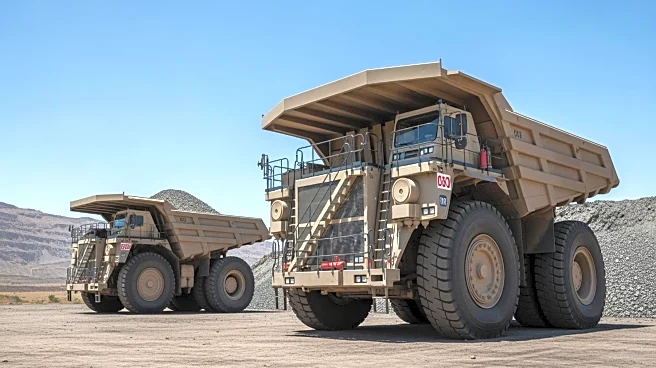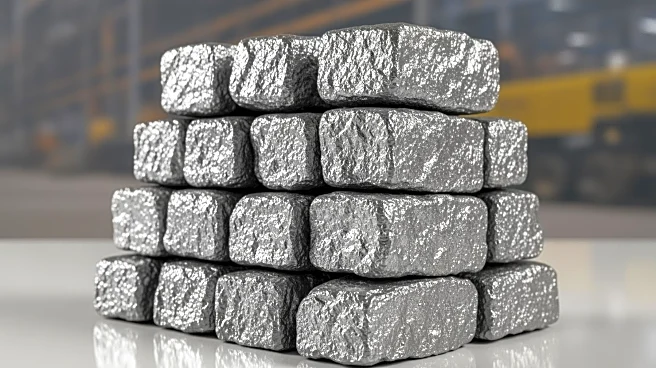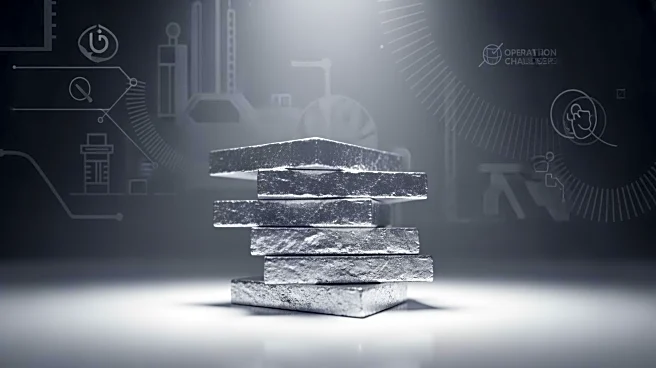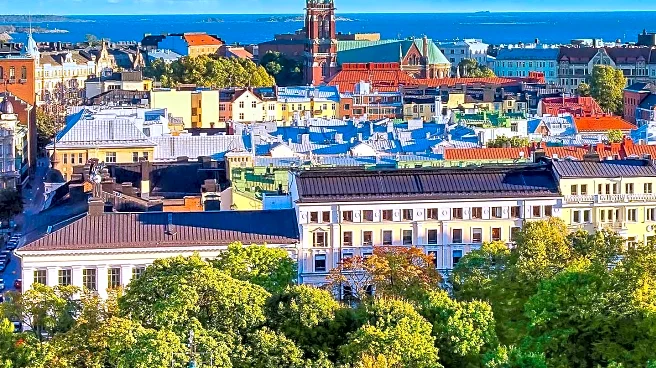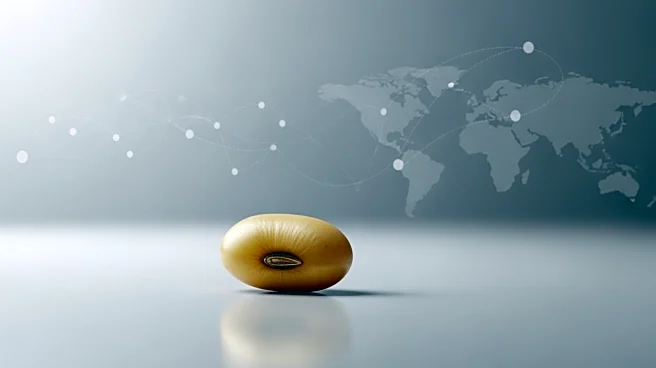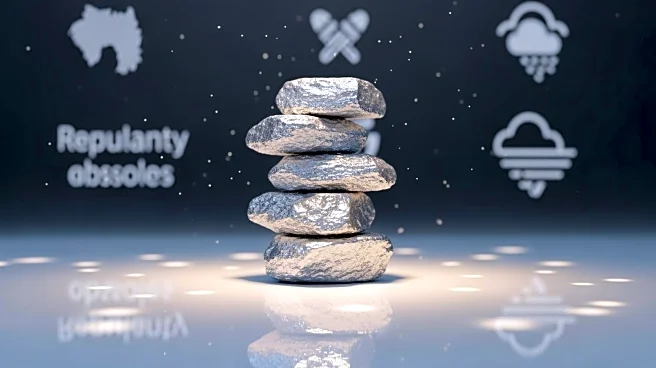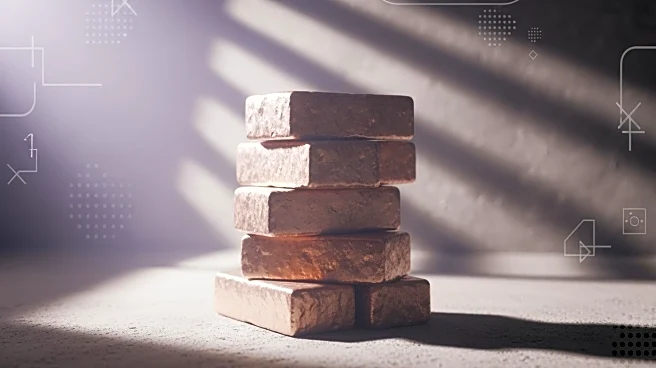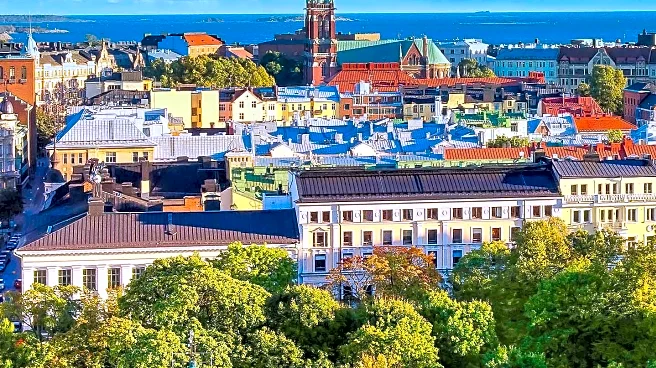What's Happening?
Rio Tinto has stockpiled two million metric tons of high-grade iron ore at its Simandou project in Guinea, preparing for its first shipment in mid-November. The shipment is expected to head to China, the
world's largest steel producer. Simandou, a mega-mine with an estimated 4 billion tons of ore, is set to reshape global iron ore supplies and pricing. The project is jointly owned by Rio Tinto, Chinese state-owned Chalco, and Winning Consortium Simandou. The inaugural shipment marks a significant milestone in the project's development, with potential implications for global iron ore markets.
Why It's Important?
The Simandou project is poised to significantly impact global iron ore supply, potentially affecting prices and market dynamics. As China seeks high-grade ore to reduce emissions and energy use, Simandou's output could alter trade patterns and influence the strategies of major iron ore producers like Australia and Brazil. The project's development also highlights Guinea's growing role in the global resource sector, with potential economic benefits for the country. The successful launch of Simandou could lead to increased competition and shifts in market share among iron ore suppliers.
What's Next?
Rio Tinto and its partners will continue to advance the Simandou project, with plans to ramp up production and expand infrastructure. The project's impact on global iron ore markets will be closely monitored, particularly in terms of pricing and supply chain adjustments. Stakeholders, including governments and industry players, will assess the project's implications for trade and economic growth. The project's formal commissioning by Guinea's government is scheduled for November 11, marking a key milestone in its development.
Beyond the Headlines
The Simandou project's debut comes amid China's increasing influence in Guinea's resource sector, particularly in bauxite exports. This development reflects broader geopolitical dynamics and the strategic importance of resource-rich regions. As China tightens its grip on Guinea's resources, other countries may reassess their positions and strategies in the global resource market. The project's environmental and social impacts will also be scrutinized, as stakeholders seek to balance economic growth with sustainable development.
